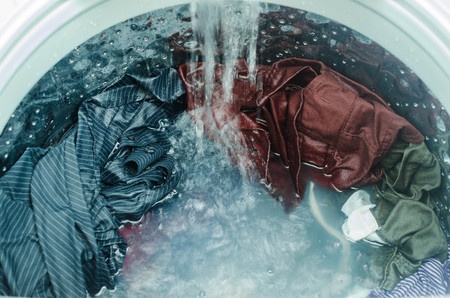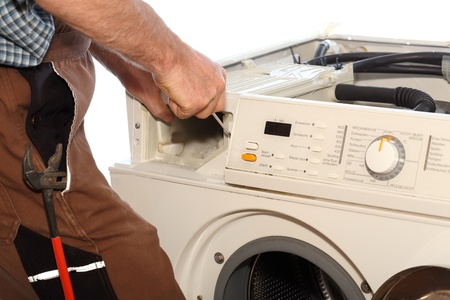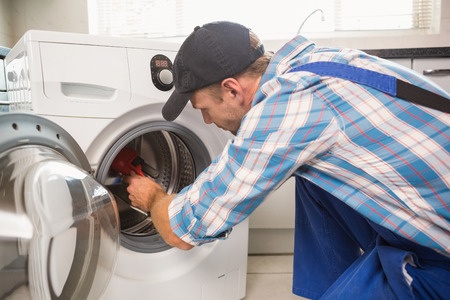
A washer that does not agitate can mean disaster for most homes, especially during winters when they want to finish their chores quickly. Ideally, most homeowners would call their washing machine repairman to troubleshoot the problem with their residential appliance. However, if you want to save a few bucks, you can try to repair the machine without any professional help.
To repair a broken washer, you must identify the problem part and repair or replace it to solve the problem. In this article, we have given a list of parts that are likely to prevent your washer from agitating. You must identify each part carefully and replace the problem part immediately. If replacing or repairing the part does not help, you should get help from a qualified washer technician.
Here are some areas to look out for to prevent your washer from agitating:
Agitator
The agitator is responsible for moving your clothes through the detergent and water and it’s driven by the output shaft. The agitator of the washer is a single or two piece unit depending on your model. If the agitator of the machine does not oscillate back and forth, it indicates that the spline may be broken or damaged. To check the condition of the agitator and the spline, you must remove the retaining device that connects the agitator to the machine base.
Directional Cogs
At times, the upper portion of dual-agitator can get separated from the bottom portion. The upper portion of the agitator is made of a hard plastic, which can wear out due to regular use. If the directional cogs don’t turn while agitating or makes a grating sound, it must be replaced. Replacing the cog is not easy, as you have to dissemble several parts of the washer. To repair or replace the cog, you must get help from a washing machine service technician. They have all the required tools to service your household appliance.
 Cap, Coupler, & Bolt
Cap, Coupler, & Bolt
Some washers have a coupler between the agitator and the transmission shaft. If you hear a grinding sound when the machine is in operation and the agitator is not damaged, it indicates that the coupler may be damaged. To check the condition of the coupler, you must remove the agitator. Once the agitator is removed, you must unthread the retaining device and remove the coupling. Before replacing the damaged coupling, make sure the splines on the shaft is free from dust and rust. When replacing the coupler, use the new gasket and bolt that come with the coupler.
Direct Drive
The drive motor transfers the power from the machine motor to the transmission. The drive forks are connected to the transmission input shaft and drive motor shaft. The coupling between the drive forks absorbs the torque, which prevents the fork from getting damaged when the shaft rotates. When the coupling is damaged, the machine will fill and drain properly, but the machine will not spin or agitate. To access the drive shaft and assembly, you must remove the cabinet.
Drive Belt
At times, a problem with the drive belt can prevent the machine from agitating. You must remove the cabinet to inspect the condition of the belt. If the belt is worn out, it will create a noise or cause a burning smell when the machine is in operation. You must ensure that the drive pulley turns freely and both the pulley and motor are clean. Make sure the idler assembly is freely moving and operates properly before you replace the defective belt. If the belt is worn out, make sure you use the exact replacement belt as specified by the manufacturer.
Transmission
The transmission of the machine is responsible for converting the rotating motion of the drive motor to the back and forth movement of the agitator. If the drive shaft of the agitator does not oscillate, you must first verify the condition of the input shaft. If the shaft is turning properly, but the agitator does not turn, it indicates that transmission is faulty. If the transmission is faulty, the complete set must be replaced. You may also have to replace the tub seal, as it can get damaged when replacing the transmission.

A few other parts that are likely to prevent the washer from agitating include:
- Drive motor
- Timer
- Lid switch
- Water level switch
- Selector switches
If you don’t find any problem with these parts, it is best to call a washer repair technician. The technician will visit your house and try to solve your problem in the shortest possible time.
We Service Other Sites In These Popular Cities:
Jacksonville FL, Denver, San Diego, Bowie, LG Washer Repair Fort Worth TX, Birmingham, Philadelphia, Washing Machine Repair Near Me Charleston SC, Tampa, Los Angeles, Miami, Columbia, Olympia, Washer Repair LG Austin TX, Richmond, Milwaukee, Washer Appliance Repair Near Me Atlanta GA, Provo, Boston, Phoenix, Washer Repair Company Paterson NJ, Lakewood CO, Manchester, Naples, San Francisco, Sacramento, Las Vegas, Washer And Dryer Repair Lexington NJ, Virginia Beach, Washer Repair Frigidaire Vernon Township NJ, San Jose, Roswell, Aurora, Reno, Oklahoma City, Baton Rouge, Appliance Repair Newark NJ, Minneapolis, Cleveland, Washer And Dryer Repair Near Me Alexandria VA, Tacoma, Albuquerque, Salt Lake City, Charlotte NC, Henderson, Washer Repair Help Hackensack NJ, Raleigh, Detroit, Appliance Repair Washing Machine Middletown NJ, Billings, Allentown, St. Louis, Seattle, Tucson, Eugene, Omaha, New Haven, Colorado Springs, Appliance Service Edison NJ, Nashville, San Antonio, Washer Repair Ramapo NY, Indianapolis, Washer Repair Man Washington DC, Maytag Washer Repair Fort Lauderdale FL, Washer Repair Kenmore Biddeford ME, Dallas, Pittsburgh, Silver Spring, Washer Repair Near Me Parsippany-Troy Hills NJ, Kansas City, Louisville, Little Rock, Houston, Baltimore, Appliance Repair Technician Providence RI, Appliance Repair Near Me Elizabeth NJ, Tallahassee, Everett, Orlando, Kenmore Washer Repair Jersey City NJ, Appliance Repair Washer Franklin Township NJ, Washer Repair In My Area Portland ME, Chicago, New York City, Jackson, Columbus
